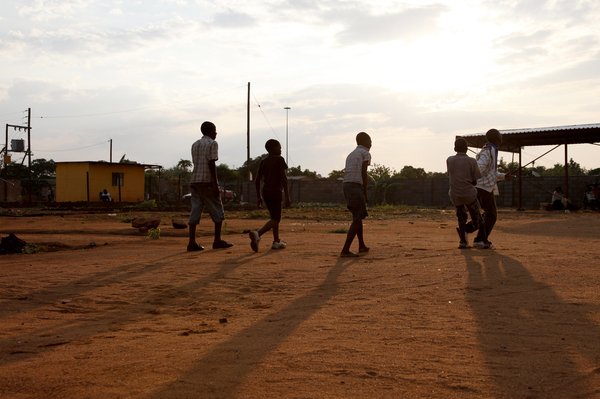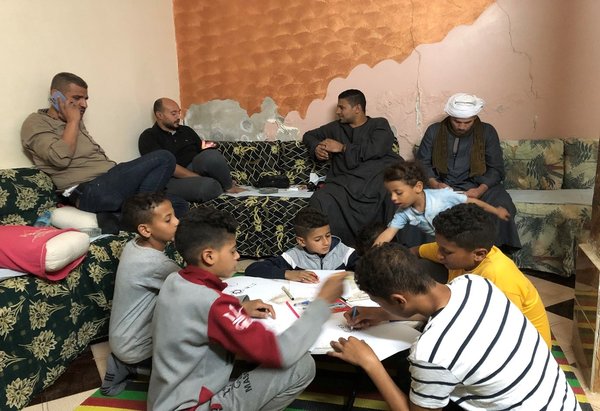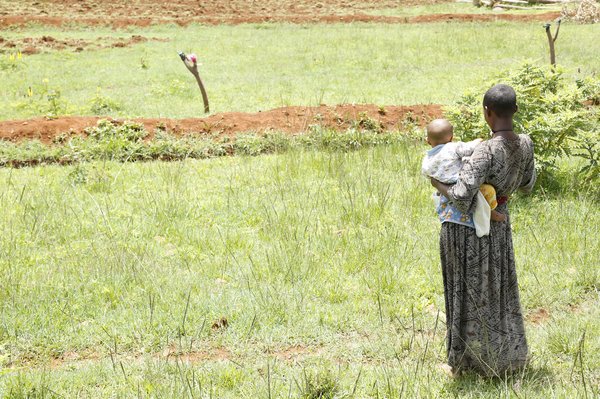
In Hudet, Ethiopia, Samuel Hall teams captured the voices of children on what their communities need to recover and move beyond the recent conflicts. Photo by Saadia Ali for Samuel Hall.
Executive Summary
This Research Report examines how children affected by migration engage with migration’s consequences. It analyses both the positive and negative ways children engage with the effects of migration, through an in-depth study of the literature and a review of specific contexts. The report examines if, why, and in which ways children can act in the face of migration - and the strategies they deploy to make the best choices for their present and future.
The literature reveals that, first, child agency is not simply the exercise of freewill against societal constraints (Abebe 2019). Second, child agency is not universal and is not always exercised in the child’s best interest. Third, agency is a qualitative notion – and quantitative approaches threaten to categorise the exercise of agency incorrectly (Abebe 2019). The findings in this report are based on qualitative interviews with children, parents, caregivers, and other migration actors across the countries.
The MIDEQ research reveals that:
- In Burkina Faso, children may undertake their migration to Côte d’Ivoire based on their own decision, negotiating directly with migration facilitators, while others negotiate with their parents to allow them to undertake the journey. Children in this context are under gendered notions of migration: migration of boys confirms societal and gendered expectations, while when girls migrate, they defy expectations and use migration to act against systems of power that they disagree with.
- In Egypt, gendered roles in migration prevail as well in the context of their migration to Jordan. Similarly to Burkina Faso, migration results in shifts in responsibilities at home. Children, including those who stay back, show high levels of maturity and adaptability, engaging directly with the migration process and its consequences. Their parents’ migration allows children who stay back the opportunity to build stronger ties with their extended families and create larger systems of support. Children in these contexts are more interconnected with their environment and engage actively in various roles.
- In Ethiopia, social understandings of age prevail over legal framing of age. As in Burkina Faso, child migration is closely linked to child labour and is socially deemed as acceptable. Investing in migration becomes a priority over education for some households, given the benefits it can bring to households and communities. However the risks are real, and while children take on adult roles as in Egypt, they are exposed to risks – such as trafficking – due to their age. Other risks include, in South Africa, the accelerated transitions to adulthood, and the discomfort child migrants feel taking on new roles without corresponding educational benefits or opportunities.
The Report concludes on five takeaways:
- Children exhibit agency within situations of vulnerability, and both positive and negative coping mechanisms can open space for new vulnerabilities.
- Child migration is embedded in social constructs that are often seen as more legitimate than legal ones, and closely tied to structural inequalities related to poverty. These justify both child migration and child labour.
- Children who stay back need to be included in national migration plans and not be considered as exogenous to the migration process. They contribute to decision making on migration and are impacted in their roles and responsibilities by migration.
- Gendered notions of childhood impact children’s participation in migration, yet migration can help defy expectations that go against children’s best interest. Migration can be an outlet to rectify harms to children.
- Children, especially older children, can be full actors in the migration process as they can independently decide to migrate. This underlines that programming and policy need to target not just adults, but also children.
- Beyond targeting children, programmes and policies need to be inclusive of children. As the MIDEQ research demonstrates, children’s voices need to be elevated in research, programming and policy.



